A House-Call and an Unusual Prescription
Two weeks ago I received a phone call from one of my long-time clients. She was frantic about her Hibiscus plant.
I’m not kidding….
Why was she so upset? Well, she had received this potted Hibiscus from her friend who had grown it for years. She was having a problem with white flies attacking her beloved Hibiscus and it was losing its leaves.
Now, I had seen the Hibiscus last fall, when she had first received it and she proudly showed me where she had put it in her dining room. It had always been grown as an indoor plant.
(All the photos below are of healthy Hibiscus. I didn’t have any photos of unhealthy ones to show you).
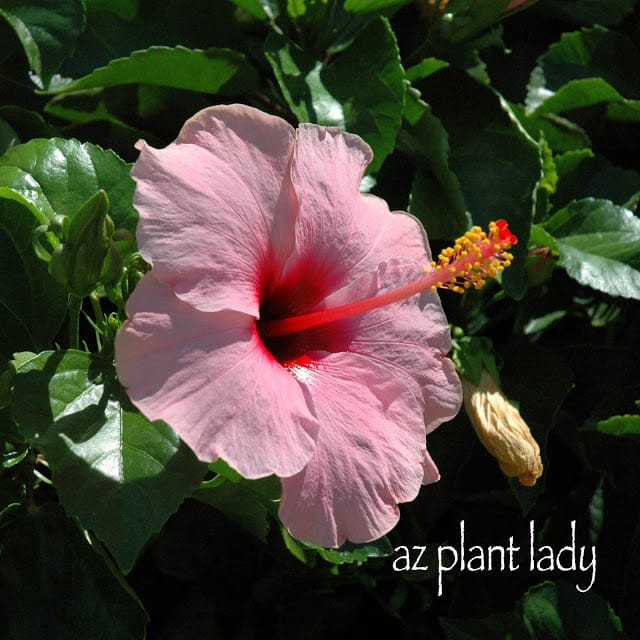
Hibiscus plant
It was a lovely specimen of Hibiscus and she was determined to take very good care of her friend’s Hibiscus.
However, when I arrived last week to look at it, it wasn’t looking too happy.
Some of the leaves were yellowing, while some were still green. The Hibiscus had lost many of its leaves. There was also ‘honeydew’ on the leaves, which are shiny, slightly sticky drops. The ‘honeydew’ is actually the ‘poop’ from the white flies.
When I gently brushed the leaves, a cloud of white flies flew upward.
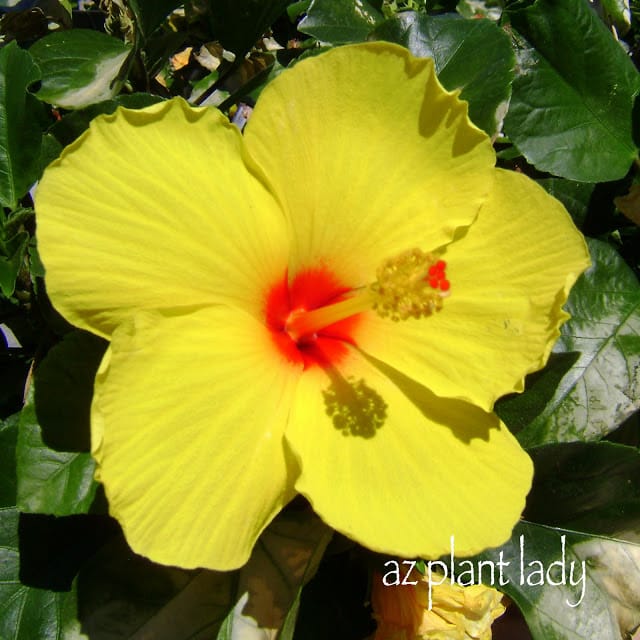
Hibiscus plant
My client had used insecticidal soap and had even carefully brushed each leaf with a soft toothbrush to get “the blasted insects” off.
But, they would always return a few days later. She was at her wit’s end. She said that she couldn’t sleep at night because she kept envisioning ways to “kill those blasted insects”.
So if you have Hibiscus (inside or outside) and have problems with white flies, I will share with you what I told her including one unusual prescription:
1. Spray the leaves (top and bottom), stems and soil surface with insecticidal soap. Do this every 4 days to kill newly emerged white flies before they can lay eggs.
The key to killing white flies with insecticidal soap is that you have to do it 3 – 4 separate times to kill the emerging white flies before they can lay eggs. Insecticidal soap does not kill the eggs, which are usually laid on the soil surface.
2. In conjunction with the insecticidal soap, put out ‘yellow sticky traps’ around your Hibiscus. White flies are attracted to the color yellow and will become ‘stuck’ on the sticky trap. You can buy them at your local nursery, or you can make your own by coloring an index card yellow, attach a popsicle stick on the pack and smear with Vaseline.
3. Neem oil has been shown to be effective as well. But, its effects aren’t obvious at first. It interferes with the life cycle of harmful insects and keeps them from eating, mating and laying eggs. However, Neem oil can be a bit strong for some plants and can damage leaves. So, before using on your entire plant, be sure to apply it to one leaf first and wait 24 hours to see if your plant handles it without damage.
4. Okay, this is my favorite solution. Some people have shown great results in repelling white flies when they incorporate ‘earthworm casings’ into the soil. What are ‘earthworm casings’ you may ask? Well, it is earthworm ‘poop’. Plants just love it and it makes a great soil amendment and many people state that it has kept white flies away from their Hibiscus plants.
**I don’t believe that there are any scientific studies to support this and I haven’t tried it personally. But, earthworm casings will benefit your Hibiscus even if it doesn’t repel white flies, so there is no danger in using it. You can buy earthworm casings online.
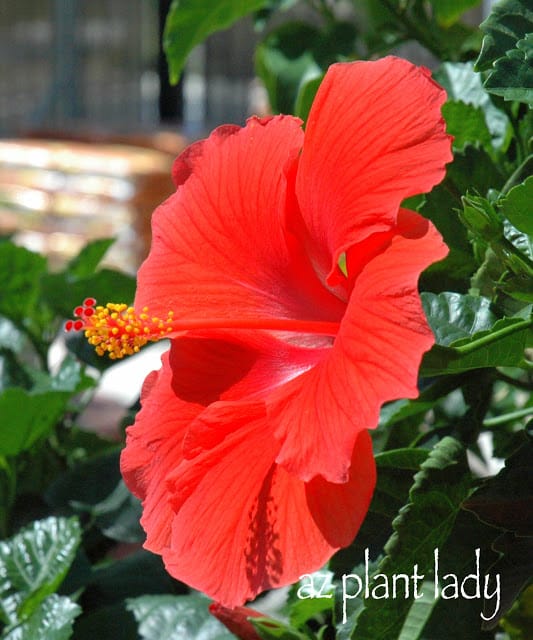
Now I generally do not make house calls for a single, indoor plant. But, these clients are a very dear couple and I have had quite a history with them. First, it was attempting to save their old, Magnolia tree. The client had grown up in Louisiana and had loved having a tree that reminded her of her girlhood home.
Sadly, the Magnolia tree died due to an underground leak of the irrigation system. But, the good news is, is that they have a new Magnolia tree that although small, should do very well in its new location.
How about you?
Do you have a tree or plant that is especially important to you?
I would love to hear about it 🙂

 Noelle Johnson, aka, 'AZ Plant Lady' is a author, horticulturist, and landscape consultant who helps people learn how to create, grow, and maintain beautiful desert gardens that thrive in a hot, dry climate. She does this through her consulting services, her online class Desert Gardening 101, and her monthly membership club, Through the Garden Gate. As she likes to tell desert-dwellers, "Gardening in the desert isn't hard, but it is different."
Noelle Johnson, aka, 'AZ Plant Lady' is a author, horticulturist, and landscape consultant who helps people learn how to create, grow, and maintain beautiful desert gardens that thrive in a hot, dry climate. She does this through her consulting services, her online class Desert Gardening 101, and her monthly membership club, Through the Garden Gate. As she likes to tell desert-dwellers, "Gardening in the desert isn't hard, but it is different."
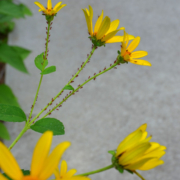
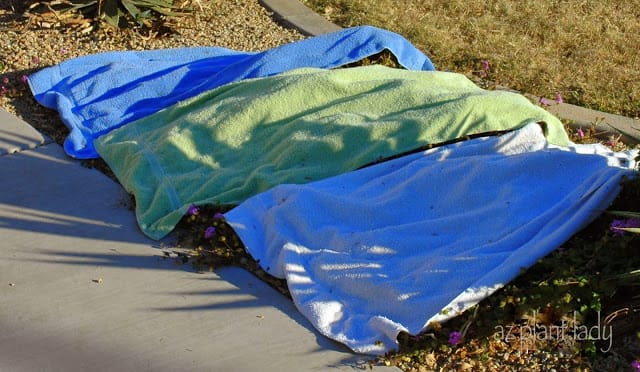

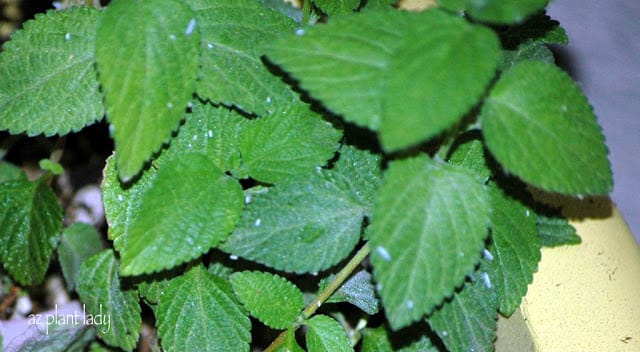






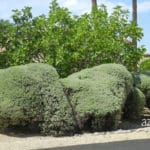

Hello Noel,
I have been reading your blog ever since we moved to Arizona and started planting – it has been wonderfully helpful to us. I had to comment though when I read this post. My husband (who turned 30 last week) has had a plant (I don't even know what kind it is) that he started in the 3rd grade. They started them in dixie cups and brought them home when they were a single sprout. He has had it since then and it has grown quite large…he would bring it outside on nice days and repotted it several times. Well during the drive to Arizona from Mass we hit colder weather than we thought and it froze. He was devastated and thought it was going to die but it had one green leaf so we have spent the last 2 years trying to baby it back to life. I am so happy that it finally (in the last 6 months or so) seems to be growing well, we now have five or six leaves. YAY!
My Jacaranda, San Pedro Cactus, and Live Oaks are everything to me. I took insulation and wrapped my Jacaranda and San Pedro Cactus around their bases to protect from freezing this past winter. It worked out well, but I lost half the Jacaranda tree and cactus, but the base was still protected. Today everything has grown back after a trim….just no purple flowers in May or June or the night blooms on my cactus:(
Przepiękne zdjęcia, cudowne hibiscusy.
Pozdrawiam.
Interesting post. I don;t think I have one plant that's important. They're all important. The possums eat all the leaves off the loquat and feijoa trees, but the leaves grow back and it doesn't seem to hurt the tree. If you don't do anything I wonder if the hibiscus would recover too?
Phalenopsis is an orchid type that needs repotting once every year until the plant reaches maturity, then you can reduce the frequency of repotting to once every two years. Don’t worry about the pot size when repotting as Phalenopsis will rather grow vertically then laterally so the same pot size should be enough. For a Phalenopsis use medium grade orchid mixes, medium grade fir bark or sphagnum moss.